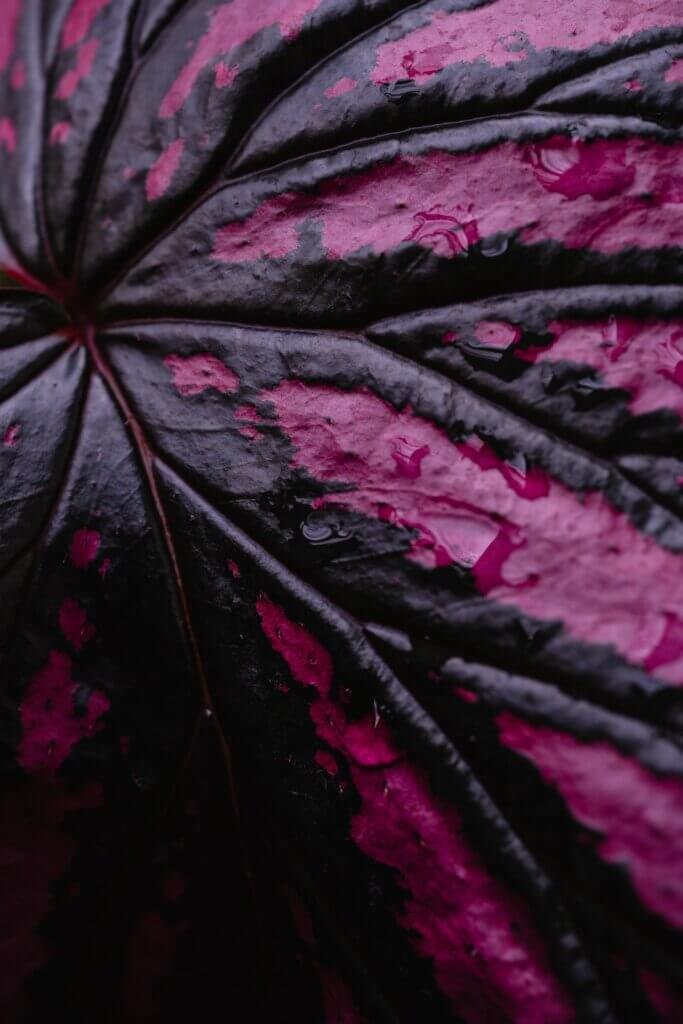If you’re looking to start a garden that not only adds beauty to your space but also provides you with natural remedies, then you’ve come to the right place. In this article, we’ll explore the top 10 eco-friendly ways to incorporate medicinal plants into your garden. From growing herbs like lavender and chamomile for their soothing properties to cultivating aloe vera for its healing benefits, these tips will help you create a sustainable and healthful garden that you can enjoy year-round. So grab your gardening tools and get ready to transform your outdoor space into a natural pharmacy.

1. Choose Native Medicinal Plants
Research Native Plants in Your Area
When incorporating medicinal plants into your garden, it is important to choose native species that thrive in your specific area. Research the native plants in your region to ensure they are well-suited for your garden. Look for plant species that have a long history of traditional medicinal use and are known to be effective in treating various ailments.
Consider the Soil and Climate Conditions
Before selecting medicinal plants for your garden, consider the soil and climate conditions of your area. Different plants have different preferences when it comes to soil type, pH level, sun exposure, and moisture levels. By understanding the specific needs of the plants you are interested in, you can ensure they will thrive in your garden.
Select Medicinal Plants Suitable for Your Garden
Once you have researched the native medicinal plants in your area and considered the soil and climate conditions, it is time to select the plants that are suitable for your garden. Choose plants that align with your needs and interests, whether it is soothing herbs for relaxation or herbs known for their healing properties. Consider the growth habit, size, and maintenance requirements of the plants to ensure they fit well within your garden space.
2. Use Organic Fertilizers
Benefits of Organic Fertilizers
Using organic fertilizers in your garden offers numerous benefits. Organic fertilizers are made from natural materials, such as compost, manure, and bone meal, which enrich the soil with essential nutrients. Unlike synthetic fertilizers, organic fertilizers promote long-term soil health, improve plant growth and vitality, and reduce the risk of harmful chemical runoff into the environment.
Types of Organic Fertilizers
There are various types of organic fertilizers that you can use in your garden. Compost, often referred to as “black gold,” is one of the most popular organic fertilizers. It is made from decomposed organic matter, such as kitchen scraps and yard waste. Other types of organic fertilizers include fish emulsion, seaweed extracts, and composted manure. Each type has its own nutrient composition and can provide specific benefits to your plants.
Applying Organic Fertilizers to your Medicinal Plants
To apply organic fertilizers to your medicinal plants, first, determine the appropriate application rate by following the instructions on the fertilizer packaging. Generally, you can spread the fertilizer around the base of the plants, taking care not to directly contact the plant stems or leaves. It is important to water the plants after applying the fertilizer to help the nutrients penetrate the soil and reach the root systems of the plants.
3. Implement Companion Planting
Companion Plants for Medicinal Plants
Companion planting involves growing different plants together to benefit one another. When it comes to medicinal plants, there are several companion plants that can help enhance their growth and provide natural pest control. Some common companion plants for medicinal herbs include marigolds, chamomile, and basil. These plants not only create a visually appealing garden but also help deter insects and attract beneficial pollinators.
Benefits of Companion Planting
Companion planting offers several advantages for your medicinal plants. It can help improve soil fertility, control pests naturally, and enhance the overall health and productivity of your garden. By strategically planting companion plants alongside your medicinal plants, you create a synergistic relationship that promotes a healthy and thriving garden ecosystem.
Creating a Complementary Planting Layout
To implement companion planting in your medicinal plant garden, consider incorporating a complementary planting layout. Group plants with similar growing requirements together and intersperse companion plants throughout the garden. For example, you can create small clusters of medicinal plants surrounded by marigolds or plant basil near your chamomile plants. This layout encourages beneficial interactions between the plants and maximizes the benefits of companion planting.
4. Practice Integrated Pest Management
Identifying Common Garden Pests
When cultivating a garden, it is crucial to be able to identify common garden pests that can potentially harm your medicinal plants. Some pests that are frequently encountered in gardens include aphids, slugs, snails, and caterpillars. Regularly inspect your plants for any signs of pest infestations, such as holes in leaves, wilting, or sticky residue.
Non-Toxic Pest Control Methods
Integrated Pest Management (IPM) is a sustainable approach to pest control that focuses on minimizing reliance on chemical pesticides. Instead, IPM advocates for non-toxic pest control methods. Physical barriers, such as row covers and nets, can be used to protect plants from pests. Additionally, introducing beneficial insects, like ladybugs and lacewings, can help naturally control pest populations.
Encouraging Beneficial Insects
Encouraging beneficial insects in your garden is an effective method of pest control. Many beneficial insects are natural predators of garden pests and can help keep their populations in check. To attract beneficial insects, grow a diversity of nectar-rich flowers, such as calendula and lavender, as well as plants that provide habitat and food for their larvae, such as dill and fennel.

5. Plan a Rainwater Harvesting System
Benefits of Rainwater Harvesting
Implementing a rainwater harvesting system in your garden offers numerous benefits. Collecting and storing rainwater allows you to reduce your reliance on municipal water supplies, lower your water bills, and conserve water resources. Rainwater is also free from the chemicals often found in tap water, making it a healthier option for your plants.
Designing a Rainwater Collection System
Designing a rainwater collection system involves capturing rainwater from roofs or other surfaces and directing it into storage containers, such as rain barrels. Ensure that your collection system has a proper filtration or screen mechanism to prevent debris from entering the storage containers. Position the containers strategically near your medicinal plants for easy access during watering.
Using Harvested Rainwater for Medicinal Plants
Once you have collected rainwater, you can use it to irrigate your medicinal plants. Watering your plants with harvested rainwater provides them with a natural and chemical-free water source. To water efficiently, use a watering can or install a drip irrigation system that delivers water directly to the root zones of your plants, minimizing water loss through evaporation.
6. Embrace Organic Weed Control
Hand Weeding
One of the most eco-friendly methods of weed control is hand weeding. Although it can be time-consuming, hand weeding allows you to physically remove weeds from the garden without the use of chemicals. This method is particularly effective for small garden areas or when dealing with specific weeds that are easy to pull out.
Mulching
Applying organic mulch, such as straw or wood chips, is an effective way to suppress weeds naturally. Mulch creates a barrier that blocks sunlight from reaching weed seeds, preventing them from germinating and growing. Additionally, mulch helps retain soil moisture, regulate soil temperature, and improve soil fertility as it breaks down.
Using Natural Weed Control Methods
There are several natural weed control methods that you can use in your medicinal plant garden. For instance, boiling water can effectively kill weeds when poured directly onto them. Vinegar, salt, and soap solutions can also be sprayed on weeds to dry them out and inhibit their growth. However, it is important to use these methods selectively, as they can harm desirable plants if not applied carefully.

7. Create a Compost System
Benefits of Composting
Composting is a sustainable way to recycle organic waste and create nutrient-rich soil amendments for your garden. By composting kitchen scraps, yard waste, and other organic materials, you not only reduce your environmental impact but also improve the overall health of your medicinal plant garden. Compost enriches the soil, enhances plant growth, retains moisture, and improves soil structure.
Different Composting Methods
There are several composting methods to choose from, depending on your available space, time, and preferences. Traditional composting involves creating a compost pile or bin and periodically turning it to promote decomposition. Vermicomposting utilizes worms to break down organic waste, producing nutrient-rich worm castings. Bokashi composting utilizes a fermentation process with the help of beneficial microorganisms.
Using Compost in Your Medicinal Plant Garden
Once your compost is ready and has fully decomposed, it can be incorporated into the soil of your medicinal plant garden. Spread a layer of compost around the base of your plants, avoiding direct contact with the plant stems. As the compost breaks down, it releases nutrients into the soil, providing the essential elements your medicinal plants need for optimal growth and health.
8. Practice Sustainable Irrigation
Efficient Watering Techniques
When it comes to irrigating your medicinal plants, it is important to practice efficient watering techniques. Deep watering at the base of the plants encourages the development of deep root systems, making the plants more resilient and drought-tolerant. Avoid overwatering, as it can lead to water waste and increase the risk of root rot and disease.
Drip Irrigation Systems
Installing a drip irrigation system is an eco-friendly and efficient way to water your medicinal plants. Drip irrigation delivers water directly to the root zones of your plants, minimizing water loss through evaporation and runoff. This method ensures that water reaches the plants’ roots where it is needed the most, reducing the amount of water wasted.
Water Conservation Tips
To further conserve water in your medicinal plant garden, consider implementing water conservation tips. Collect and reuse the water from household activities, such as washing fruits and vegetables or boiling pasta, to water your plants. Additionally, group plants with similar water needs together, allowing you to water them more efficiently. Applying a layer of mulch around your plants helps retain soil moisture and reduces the frequency of watering.

9. Encourage Pollinators
Importance of Pollinators
Pollinators, such as bees, butterflies, and other insects, play a critical role in the reproduction of plants, including medicinal plants. They transfer pollen from one flower to another, allowing fertilization and seed production to occur. By encouraging pollinators in your garden, you ensure the successful reproduction of your medicinal plants and the continuation of their health and abundance.
Attracting Bees, Butterflies, and Other Pollinators
To attract bees, butterflies, and other pollinators to your medicinal plant garden, include a variety of nectar-rich flowers that bloom throughout the growing season. Plant native species, as they are well-adapted to the local ecosystem and the preferences of local pollinators. Provide nesting sites, such as bee houses or piles of rocks and logs, to encourage pollinators to take up residence in your garden.
Creating a Pollinator-Friendly Habitat
Creating a pollinator-friendly habitat involves providing the necessary resources for pollinators to thrive. Minimize pesticide use, as it can harm pollinators and disrupt their natural behaviors. Provide a water source, such as a shallow dish of water with stones for insects to perch on. Maintain diverse plantings that offer different colors, shapes, and scents to attract a variety of pollinators.
10. Harvest and Preserve with Care
Best Harvesting Practices for Medicinal Plants
When it comes to harvesting medicinal plants, it is important to follow best practices to ensure their potency and effectiveness. Harvest when the plant is at its peak, usually in the morning after the dew has dried but before the heat of the day. Use sharp and clean tools to avoid damaging the plants and introducing contaminants. Selectively harvest individual leaves or flowers to allow the plant to continue growing.
Drying and Storing Medicinal Herbs
Properly drying and storing medicinal herbs is essential to preserve their medicinal properties. Spread the harvested herbs in a single layer in a well-ventilated area away from direct sunlight. Ensure that the herbs are fully dry before storing them in airtight containers away from heat, light, and moisture. Label each container with the herb’s name and the date of harvest to maintain freshness and potency.
Using Fresh or Preserved Medicinal Plants
Once you have harvested and preserved your medicinal plants, you can use them fresh or preserved in numerous ways. Fresh herbs can be used immediately in teas, tinctures, or culinary preparations. Preserved herbs can be used in the same manner, with the added convenience of a longer shelf life. Experiment with different methods of preparation, such as infusions, decoctions, or herbal oils, to enjoy the benefits of your homegrown medicinal plants year-round.
Incorporating medicinal plants into your garden is not only a sustainable and eco-friendly endeavor but also a rewarding one. By choosing native plants, utilizing organic fertilizers, implementing companion planting, practicing integrated pest management, planning a rainwater harvesting system, embracing organic weed control, creating a compost system, practicing sustainable irrigation, encouraging pollinators, and harvesting and preserving with care, you can create a thriving medicinal plant garden that supports your health and well-being while benefiting the environment. Get started today and experience the joys of gardening with nature’s own medicine.



